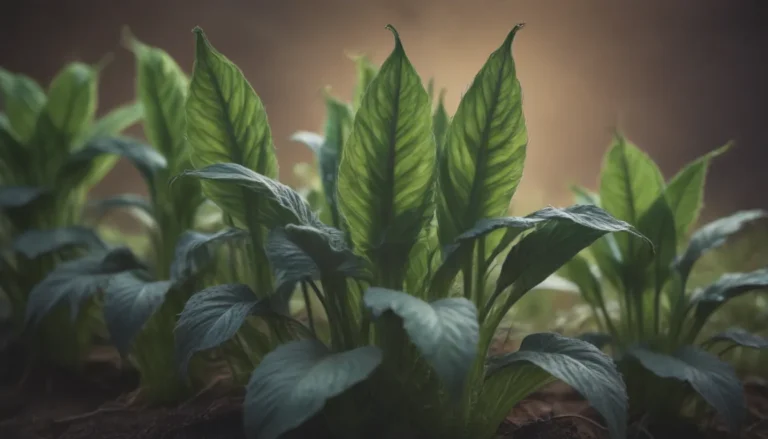Monoecious vs. Dioecious Plants: A Comprehensive Guide to Understanding Plant Reproduction

Have you ever come across the terms “dioecious” and “monoecious” when reading about plants but found yourself confused about what they mean? Don’t worry, you’re not alone. These terms are commonly used in horticultural descriptions to categorize plants based on their reproductive characteristics. Understanding the differences between dioecious and monoecious plants can help you make informed decisions when it comes to gardening and landscaping. In this article, we’ll dive deep into the world of plant reproduction to explore the distinctions between these two categories and provide you with valuable examples to expand your knowledge.
What Are Dioecious and Monoecious Plants?
Let’s start by breaking down the definitions of dioecious and monoecious plants in simple terms. The key distinction lies in how individual plants are equipped for reproduction. Here’s a quick guide to help you remember the meanings of these terms:
-
Dioecious Plants: In dioecious species, each plant is either a male or female member. This means that some plants of the species have only male reproductive organs (stamens), while others have only female reproductive parts (pistils).
-
Monoecious Plants: On the other hand, in monoecious species, each plant bears both male and female flowers. This means that you can find stamens and pistils on different flowers of the same plant.
-
Hermaphroditic Plants: Another category worth mentioning is the group of plants where each flower contains both male and female parts. These are known as “bisexual” or “hermaphroditic” species.
If you’re trying to remember which is which, just think of the Greek prefixes: “di” meaning two for dioecious, and “mono” meaning one for monoecious.
How to Tell the Difference
When it comes to determining whether a plant is dioecious or monoecious, observational skills come in handy. Here’s a simple breakdown:
-
Dioecious Plants: To ensure successful pollination in dioecious plants, you need both male and female plants in the vicinity. For example, holly shrubs are dioecious, so having a male cultivar nearby is essential for pollinating the fruit-bearing female plants.
-
Monoecious Plants: Monoecious plants can reproduce on their own without the need for a partner. So, if you’re considering a red-twig dogwood shrub for its berries, you only need to buy one plant.
Fun Fact: Did you know that monoecious plants bloom and set seed independently without requiring a partner? Nature is truly fascinating!
Unisexual Flowers vs. Bisexual Flowers
Both dioecious and monoecious plants have unisexual flowers with either male or female reproductive parts. In dioecious plants, these blossoms appear on separate male and female plants, while each plant of monoecious species contains both male and female flowers. Additionally, there’s a third category of plants with bisexual or hermaphroditic flowers, where each flower encompasses both male and female parts. These “perfect” flowers allow for self-contained pollination within the individual blooms.
An intriguing example of a plant with perfect flowers is the lily (Lilium), showcasing the wonders of nature’s intricate reproductive mechanisms.
Examples of Dioecious, Monoecious, and Hermaphroditic Plants
To bring this botanical lesson to life, let’s explore some common examples of dioecious, monoecious, and hermaphroditic plants you may encounter in your garden or local landscapes.
Dioecious Plants Examples:
- Holly Shrubs (Ilex): A classic example of dioecious plants where separate male and female cultivars are required for pollination.
- Ginkgo Trees (Ginkgo biloba): Another well-known dioecious plant that exhibits distinct male and female specimens.
Monoecious Plants Examples:
- Cornus alba (Red-Twig Dogwood): A striking monoecious shrub known for its vibrant berries.
- Cucumis sativus (Cucumber): An edible plant with separate male and female flowers on the same vine.
Hermaphroditic Plants Examples:
- Lilium (Lily): An elegant flowering plant with perfect flowers containing both male and female reproductive parts.
- Ficus carica (Common Fig): A popular fruit-bearing tree with hermaphroditic flowers for efficient pollination.
It’s fascinating to see the diversity in plant reproduction mechanisms and how they adapt to ensure successful pollination and fruit production.
Conclusion
In the vast world of plants, understanding the distinctions between dioecious, monoecious, and hermaphroditic species can enhance your gardening knowledge and appreciation for nature’s complexities. Next time you’re selecting plants for your garden or landscape, take a moment to consider their reproductive characteristics and how they contribute to biodiversity and ecosystem sustainability.
Remember, every plant has a unique role to play in the circle of life, whether it’s a male holly pollenating nearby female shrubs or a self-sufficient red-twig dogwood producing berries on its own. Nature’s diversity is a marvel to behold, so let’s continue to learn and celebrate the wonders of plant reproduction in all its forms.
Sources:
– Iowa State University Extension and Outreach: Botanical Terminology
– Plantura: Monoecious, dioecious, and hermaphroditic plants explanation
– North Carolina State University Cooperative Extension: Ilex verticillata





